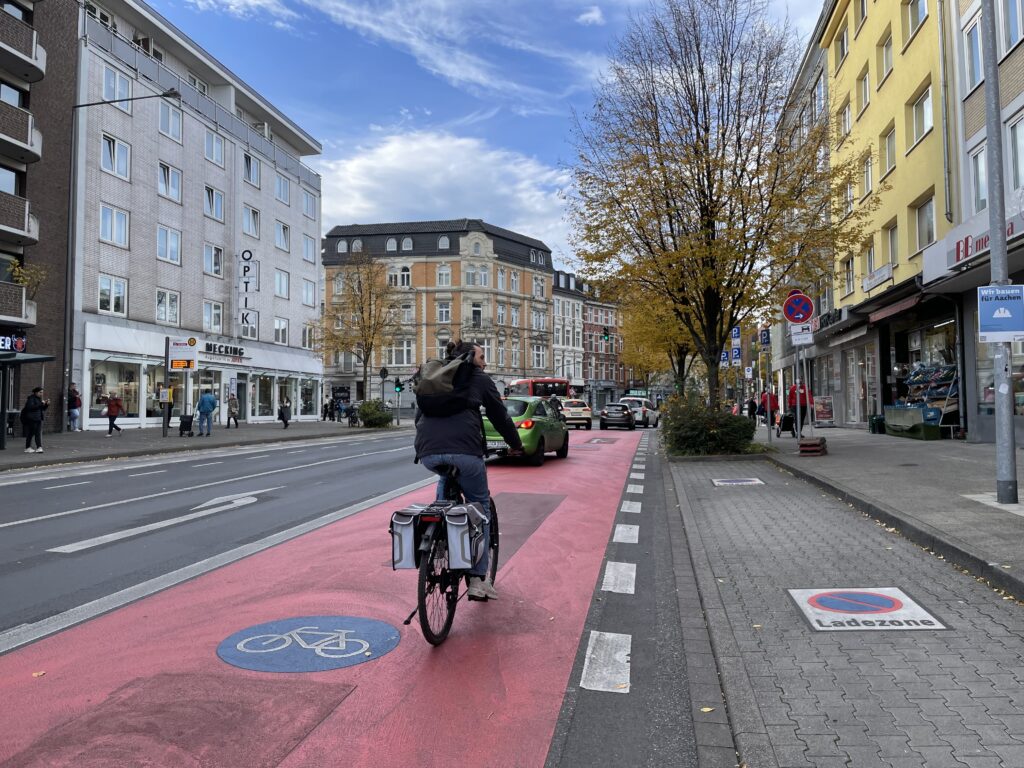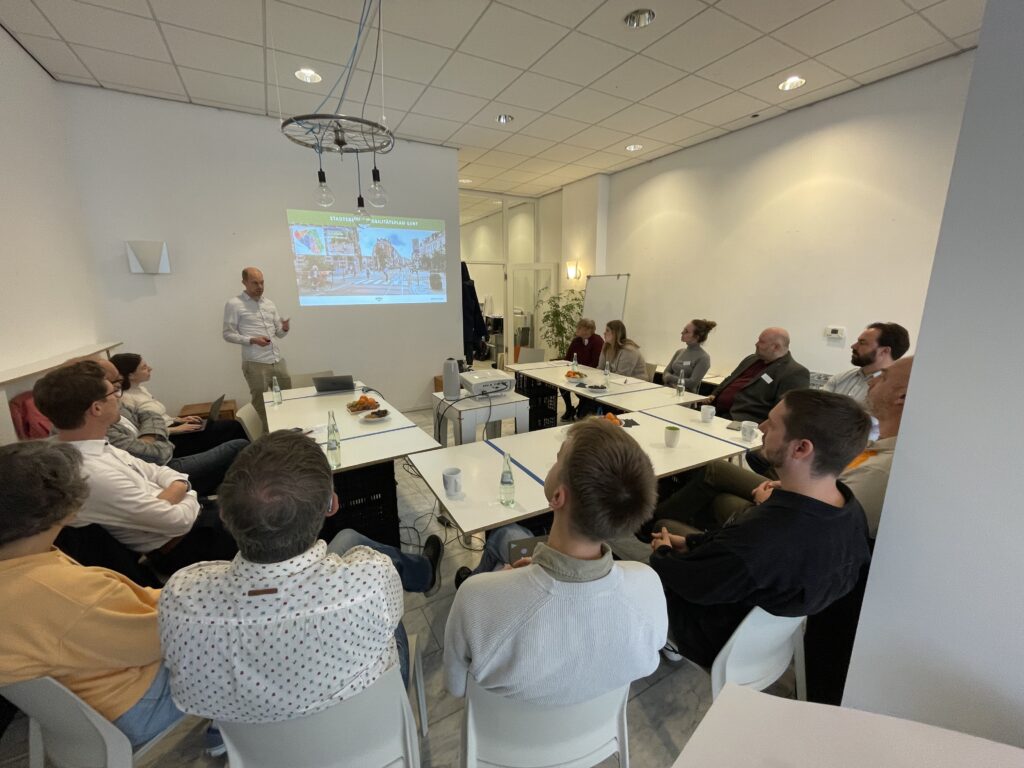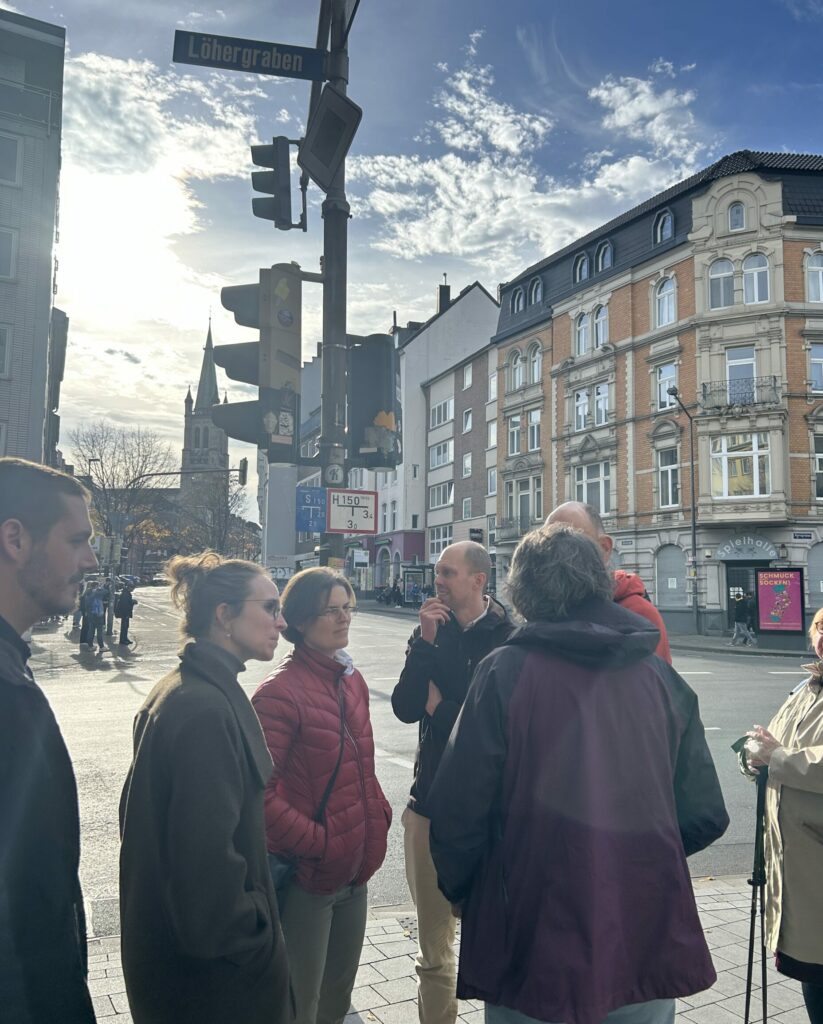Rethinking Urban Traffic: Circulation Plans for Vibrant Cities
How can cities manage traffic without compromising accessibility, while also creating more space for sustainable mobility, safety, and an improved urban quality of life? Circulation Plans are a highly effective tool to achieve exactly that. They ensure cross-modal accessibility without allowing inner-city through-traffic or creating counterproductive incentives.
Four years ago, the City of Aachen initiated the development of its own Circulation Plan – a strategic concept for managing traffic and reclaiming space to create a more livable city. Implementation has now begun. It was the right moment to exchange knowledge with other municipalities and experts about the goals, impacts, mechanisms, and practical details of such plans.

On November 6, 2025, the CIVITAS city of Aachen hosted the expert forum “Rethinking Urban Traffic: Circulation Plans for Vibrant Cities”, a workshop organized within the framework of CIVINET in German-speaking countries. Organized by Mobycon, the event brought together representatives from municipalities, politics, and transport planning from Germany, Austria, and the Netherlands to discuss new approaches to traffic management, review Aachen’s local implementation, and share experiences with one another.
The cities of Aachen and Eindhoven shared detailed insights into their respective Circulation Plans, their approaches, implementation strategies, and challenges. Wolfgang Aichinger from the think tank Agora Verkehrswende discussed with participants how new traffic management strategies can be enforced and how through-traffic can be reduced. While neighbouring countries such as Belgium and the Netherlands already use camera-based technologies for enforcement, the legal framework for such tools is still lacking in most of Germany.

Daniela Rüdel guided the group through Aachen’s city center, showing key control points and the redesigned traffic layout. On site, participants discussed how transitions, filters, and small-scale interventions can alter perception and behavior — it was the moment when theory met practice. Daniela Rüdel explained:
“Small, visible measures can have a big impact. In Aachen, we can see how a new overall picture gradually emerges – even if at first, it’s only visible in fragments.”
Mobycon’s transport planner Robin van der Griend shared experiences from Circulation Plans in Ghent, Groningen, and Houten, noting:
“It is crucial that people can see the impact of a Circulation Plan. The traffic measures should be linked to the design of the reclaimed space — make use of placemaking opportunities, both on the street and in communication.”

Erik van Hal, a key thinker behind Eindhoven’s Circulation Plan, explained how the city plans to implement its strategy gradually in the coming years. Eindhoven expects significant population growth by 2040 — from today’s 250,000 to 300,000 residents, including 40,000 new housing units. To preserve and create livable inner-city spaces in a growing city, space must be used more efficiently.
Through its Circulation Plan, Eindhoven aims to optimize road use, enhance accessibility, and repurpose traffic space for alternative purposes. For example, five new public squares with seating and social spaces are planned. As Erik van Hal stated:
“We are not talking about restricting traffic, but about creating more comfort, safety, and atmosphere in the city.”
External communication, he emphasized, is both crucial and challenging. The measures of a Circulation Plan should be visible, tangible, and communicated positively — highlighting new opportunities rather than restrictions. That, however, is easier said than done.
In a simulation exercise, participants developed ideas for how the story of a Circulation Plan can be told, including redistributing space, reducing through-traffic, fostering urban greenery, and making the quality of life visible. Every transformation needs a compelling narrative — one that explains how it improves urban life.

The conclusion of the day: A Circulation Plan is not merely a technical traffic intervention. It is an ongoing process that connects urban development, mobility, and communication. From a broader perspective, the overarching goals are similar in all cities: reducing traffic and improving the quality of life. The real question is — how do we tell the story?
Does your city need help developing a Circulation Plan? Reach out to us to find out how Mobycon can help you.

